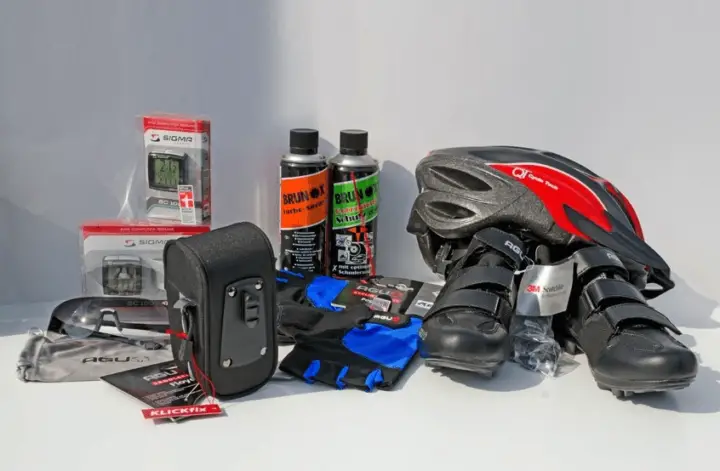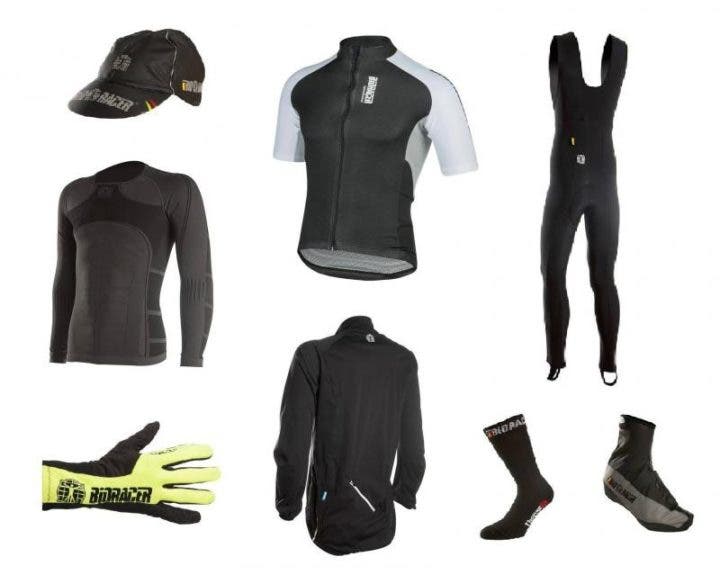Sports cycling events have recently become very popular as an option for those who want a good exercise routine and have fun at the same time, enjoying the fresh air and beautiful landscapes.
Tours can last from one to several hours. There are usually distance options to choose from and you can even do a time trial at different times. However, these events are not officially classified as races and unlike races, they are considered more of a social event.
Learn everything you need to know about cycling events and how to prepare for them.
Why participate?
Sports cycling events will not subject you to the competitive pressures that exist within a race, it is rather an activity to enjoy your time and yourself. You will have the opportunity to pose new personal challenges such as increasingly longer distances, more difficult terrain, or simply try to complete the route in less time.
On the other hand, a sports cycling event is a good occasion to visit some part of the country (or another country) that is new to you.
How should you prepare?
If you are well prepared, you will enjoy the event more and avoid any last minute setback. A couple of days before the event, check if everything is in order, in case it is necessary to make any repairs to your bike. Don’t leave anything for the last minute!
Make sure above all of the following:
- The spokes are not loose.
- The tires are not worn or cracked.
- Gear changes work well.
- The brake is well aligned to the disc.
- The brakes are in good condition.
- The braking action is smooth.
- The pedals are not loose.
- The bottom bracket shell is well adjusted.
- The handlebar is tight.
- Secure fixing of electronic sensors.
- Comfortable and secure seat adjustment.
- No frayed or frayed cables.
- Electronic items such as lights, GPS, or computers must have new or freshly charged batteries.
- Auxiliary items such as pumps and bags are well fixed.
What equipment do you need?

Bring enough tools and essential items with you. Having your own equipment will allow you to solve any simple problem and be back on the road quickly.
1. Spare tires
They take up little space and if a puncture occurs they can be changed quickly. He always wears one, and in longer events he wears two.
2. Puncture repair kit
It will be useful if you are unlucky enough to suffer multiple punctures. Make sure you have the correct size patches and that the glue tube has enough adhesive in it (as it tends to evaporate once the tube is opened). Bring some sandpaper to clean the tire before applying the glue.
3. Air pump
A good air pump will re-inflate a tire quickly. There is plenty of space in the frame to fit it and its weight is minimal. Pumps are preferable to gas cylinders that are only used once, because if you are unlucky enough to have multiple punctures you will get stuck.
Choose a pump that does not need any cumbersome adapters for the type of tire you use, because they are easily lost at the most inappropriate times.
4. Lever for removing tires
With this tool it will be easier to remove and replace a tire , especially if you have never changed one before.
5. Spare links
It is possible, but rare, for the chain to break. The little links take up hardly any space and if you are in a remote place with little support, one of these can be useful to be able to return home or at least to some place where help can be found. A tool is also required to join the links.
6. Multipurpose tool
A small multipurpose tool can quickly cope with most adjustments and parts that have come loose.
7. Map
In case you get separated from the main group or are unlucky enough to get lost and need help, a route map might help. Even better will be a copy of a map that can be provided by the event organizers.
8. Mobile phone
To inform others in case of delays or that you need help.
What kind of clothes do you need?

Check the weather forecast a few days before. If the weather is likely to be cold or wet, wear appropriate clothing . Even if you feel hot when you walk, stopping can cool you down fairly quickly. A waterproof jacket or vest will help stop heat loss. You can use carbon-based thermal shoe liners and gloves, which will make the trip more enjoyable.
On the other hand, it is important that you wear glasses, lest a flying insect hit you in the face. Goggles also prevent dust and sand from getting into your eyes .
Include a change of clothes on your list for the return trip. If the weather has been humid, bags to store all wet clothing and gear can be helpful.
What drinks and food should I bring?
In an intense cycling activity you will burn large amounts of calories from carbohydrates , but when the reserves are low you will require additional food to be able to continue any trip that lasts more than two hours. Sugar-based energy drinks and gels are good for providing a short burst of energy. They can provide around 240 calories per hour. This number of calories, which will last for half an hour, will be ideal for short or medium-length tours.
In long events, ingesting sugars frequently can be tedious and in that case some slow digesting foods will provide you with a more constant and lasting release of energy. That’s why bring fruit, sandwiches, and oatmeal bars with you. Something salty helps to remove the sweet taste from the gels. Make sure all foods are easy to handle.
Water will be essential, and it is a good idea to add electrolytes to replenish minerals lost through sweat.
How should you train?
Training should be long and continuous to build basic endurance and improve fat metabolism and cardiovascular health.
The most challenging rides often include a series of climbs. Try to find some climbs on your local loop that are similar to what you might experience. Select a gear change that allows you to reach the top of the incline with a tolerable level of fatigue. Recover going down the hill and then back up again. Avoid accelerating too much, go easy.
If you are not used to running in a group of cyclists, find a local club or group and join them for some excursions before the day of the event you will be participating in.
What to do after the event?
It’s a good idea to do gentle, slow stretches before getting in the car (or getting back on the bike) to go home.
Some examples of stretching can be:
- Stretch your arms over your head and then move them in a circle.
- Roll your upper body from side to side.
- Do lateral spine bends and hip extensions.
- Make rotary movements with each foot.
All these movements must be slow and controlled.
Reference
- Simon Kidd, Sportive cycling events: what they are, why to do them, and how to prepare. For Breakingmuscle [Revised December 2015]